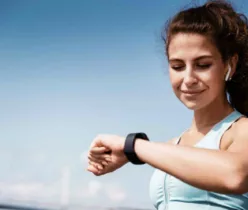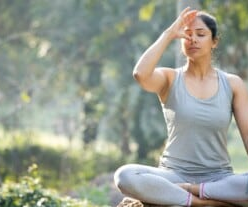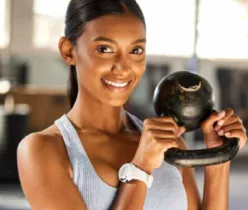
Embarking on a yoga journey can be a transformative experience, especially for beginners. Yoga offers a holistic approach to wellness, combining physical postures, breathing techniques, and meditation to foster a sense of harmony between the body and mind. This article serves as a guide for those new to yoga, providing essential insights on starting a practice, designing sequences, mastering foundational poses, cultivating a home practice, and effectively concluding sessions. Whether you’re seeking to enhance flexibility, strength, or inner peace, these tips will help you lay the groundwork for a fulfilling yoga practice.
Key Takeaways
- Yoga for beginners should start with understanding the basics, including the importance of breathing and setting intentions.
- A beginner’s yoga sequence is typically divided into four sections: centering, warm-up, active practice, and cool-down.
- Essential poses like Easy Pose (Sukhasana) and Triangle Pose (Trikonasana) are the building blocks for a balanced practice.
- Creating a conducive space and using tools like yoga flashcards can enhance a home yoga practice and maintain consistency.
- The final cool-down exercises and Savasana are crucial for integrating the benefits of the practice and reflecting on progress.
Laying the Foundations: Starting Your Yoga Journey

Understanding the Basics of Yoga
Yoga is more than just physical postures; it’s a holistic practice that integrates body, mind, and breath. Starting your yoga journey requires a foundational understanding of its principles and techniques. A typical yoga class for beginners might include four key sections: Centering, Warm-Up, Standing and Balancing, and Cool Down. Each serves a unique purpose in your practice.
- Centering: Begin seated or lying down, focusing on your breath to collect and concentrate your awareness.
- Warm-Up: Engage in stretches and gentle poses to prepare your body for the more challenging poses ahead.
- Standing and Balancing: This middle section includes poses that challenge your balance and body awareness while maintaining breath control.
- Cool Down: Conclude with simpler seated and reclined stretches, leading to Savasana, which integrates the benefits of your practice.
Embrace each pose not just as a physical shape but as an opportunity to deepen your self-awareness. The true essence of yoga lies in the conscious connection you forge between your body and mind during each posture.
Remember, the pose itself is not yoga; the awareness you bring to your practice is. Whether you’re practicing at home or in a class, allow yourself the space to explore each movement with intention and mindfulness.
Yoga for Beginners: The Importance of Breath and Centering
Breath and centering are the cornerstones of a transformative yoga practice. Focusing on your breath helps to calm the mind and establish a rhythm that guides you through each pose. Centering at the beginning of your practice allows you to transition from the day’s activities to a state of mindfulness.
Centering can be achieved through simple seated or lying positions, where attention is directed towards the breath, making it slower and deeper. This act of mindfulness is the foundation upon which the rest of your practice is built.
Incorporating centering techniques is not just about starting your practice; it’s about creating a space within yourself that remains steady and calm. Here are some steps to help you center:
- Begin in a comfortable seated position, such as Easy Pose (Sukhasana).
- Close your eyes and take a moment to notice the natural rhythm of your breath.
- Gradually deepen your inhalations and lengthen your exhalations.
- Allow any external distractions to fade as you bring your awareness inward.
- Maintain this focus on the breath for several minutes, setting the tone for your session.
Yoga for Beginners: Setting Intentions for Your Practice
After understanding the basics of yoga and the importance of breath and centering, it’s time to set intentions for your practice. This crucial step transforms your practice from a mere physical exercise to a more profound experience.
Setting an intention is akin to planting a seed that you nurture throughout your yoga session. It guides your focus and aligns your practice with your innermost values and aspirations.
Consider these points when setting your intention:
- Reflect on what brought you to yoga
- Think about what you wish to achieve or cultivate through your practice
- Allow your intention to be a positive affirmation or a quality you want to embrace
Remember, your intention doesn’t have to be complex; it can be as simple as seeking peace or gratitude. Let this intention be the foundation upon which you build your yoga sequence, infusing each pose with purpose and meaning.
Yoga for Beginners: Designing Your First Yoga Sequence
The Four Sections of a Beginner’s Yoga Class
A beginner’s yoga class is a journey through four distinct sections, each with its own focus and benefits. Starting with Centering, you’ll begin seated or lying down, tuning into your breath, and perhaps engaging in a simple meditation to gather your thoughts and awareness.
Warm-up exercises follow, consisting of gentle stretches and less intense poses that ready your body for the more demanding postures ahead.
The Standing and Balancing section forms the core of the practice, where you’ll encounter poses that challenge your stability and encourage mindfulness in movement.
Finally, the class concludes with a Cool Down, which includes simpler seated and reclined stretches, leading into the restorative Savasana. This final pose is crucial as it allows your body to assimilate the benefits of the session.
By understanding these sections and their purposes, you can begin to craft a yoga sequence that feels personal and fulfilling, ensuring a balanced and comprehensive practice.
Yoga for Beginners: Incorporating Warm-Up Poses
Warm-up poses are essential in preparing your body for the yoga session ahead. They help to increase blood flow, enhance flexibility, and reduce the risk of injury. Start with gentle stretches to awaken the muscles and joints before progressing to more dynamic movements.
- Cat and Cow (Marjaryasana and Bitilasana) are perfect for beginners as they stretch the back and shoulders gently.
- Simple seated and reclined stretches can serve as a bridge to more complex poses.
It’s important to listen to your body during warm-ups. If a pose feels uncomfortable, make adjustments or choose an alternative stretch.
Remember to incorporate Ujjayi breathing to help center your mind and warm your body from the inside out. This breath technique is a powerful tool to enhance your warm-up and overall practice.
Building a Balanced Practice
A balanced yoga practice is essential for beginners to develop both strength and flexibility. Incorporate a variety of poses that target different areas of the body and address various aspects of physical and mental health. For instance, a sequence might include standing poses for stability, seated poses for flexibility, and twists for spinal health.
- Standing Poses: Mountain Pose, Warrior II
- Seated Poses: Staff Pose, Bound Angle Pose
- Twists: Seated Twist, Half Lord of the Fishes Pose
Balance is not just physical; it’s also about finding equilibrium in your mental and emotional states. A well-rounded practice will help you cultivate inner strength and serenity.
Remember to include poses that challenge you, but also allow time for relaxation and reflection. A 12-minute core strength sequence or a 20-minute grounding sequence can be a great starting point for those new to yoga. As you progress, you can explore more complex sequences and longer practices to deepen your yoga journey.
Essential Yoga Poses for Beginners

Mastering Easy Pose (Sukhasana)
Easy Pose, or Sukhasana, is a fundamental yoga posture often used as a meditative seat that transitions you from the day’s activities to a more centered state. To practice Sukhasana perfectly, begin by sitting on your yoga mat or a blanket with your legs outstretched. Gently cross your legs at the shins, placing each foot beneath the opposite knee. Keep your hands on your knees with palms facing up to open your chest or down for grounding.
Ensure your spine is straight, and your pelvis is in a neutral position. Allow your shoulder blades to find their natural alignment, creating a sense of ease throughout your upper body.
This pose offers numerous benefits, including improved posture, increased calmness, and strengthened back muscles. Here are steps to get into Sukhasana:
- Sit on your yoga mat or blanket with your legs outstretched.
- Cross your shins and widen your knees, creating space for your pelvis.
- Place your hands on your knees, palms up or down.
- Keep your arms resting beside you, allowing the shoulder blades to align naturally.
- Maintain a straight spine, relaxed shoulders, and a level pelvis.
By incorporating Sukhasana into your routine, you lay the groundwork for a stable and attentive yoga practice.
Exploring Triangle Pose (Trikonasana)
Triangle Pose, or Trikonasana, is a fundamental asana that combines stretching with strengthening. It may be exactly what your hips, hamstrings, and lower back need. As you embark on this pose, it’s crucial to maintain proper alignment to reap the full benefits and prevent injury.
To begin, stand with your feet wide apart, extending your arms to the sides at shoulder height. Turn your right foot out 90 degrees and your left foot in slightly. Reach out to the right, hinging at the hip to lower your right hand down to your ankle, shin, or the floor, while your left arm reaches up towards the sky. Your gaze can be directed to your left hand, straight ahead, or down at your right foot, depending on what feels best for your neck.
Practicing Trikonasana multiple times allows you to focus on different aspects of the pose with each repetition. Start by concentrating on the foundation—your feet and legs. On subsequent attempts, shift your attention to the alignment of your spine and the extension of your arms. Remember to breathe steadily throughout.
As a beginner, repeating the pose two to three times can be particularly beneficial. Each repetition allows you to deepen your understanding and improve your technique. Keep in mind that every practice is a step forward in your yoga journey.
Integrating Foundational Poses into Your Routine
In Yoga for Beginners, integrating foundational poses into your routine is a crucial step toward a balanced practice. Start with poses that warm up the body and prepare it for more challenging asanas. As you progress, include standing and balancing poses that engage different parts of the body, teaching you to maintain awareness and steady breathing throughout.
When practicing poses like Triangle Pose (Trikonasana), repeat them focusing on different aspects each time. This repetition helps deepen your understanding of each pose and its effects on your body.
Balancing poses can be particularly transformative. They encourage you to find stability by fixing your gaze and controlling your breath, leading to a sense of grounding. Remember to conclude with cool-down stretches and Savasana, the restorative pose that integrates the benefits of your session.
Cultivating a Home Yoga Practice

Creating a Conducive Space for Yoga at Home
To embark on a fulfilling home yoga practice, establishing a dedicated space is essential. This area should be quiet, clean, and free from distractions, allowing you to focus on your practice. Consider the following elements to enhance your space:
- Comfort: Ensure the flooring is comfortable for seated and lying poses. A yoga mat or a soft rug can provide the necessary cushioning.
- Lighting: Soft, natural light can be soothing, but if that’s not available, opt for warm, artificial lighting.
- Personal Touch: Add elements that inspire tranquility, such as plants, inspirational quotes, or a small altar.
Creating a space that resonates with your personal sense of peace will encourage a deeper connection to your practice.
In addition to these qualitative aspects, it’s important to have the right equipment on hand. Here’s a simple list to get started:
- Yoga mat
- Blocks
- Strap
- Bolster or cushion
- Blanket
By tailoring your environment to support your yoga journey, you’ll be more inclined to return to your mat regularly and with enthusiasm.
Utilizing Yoga Flash Cards and Resources
Yoga flashcards can be an invaluable tool for beginners, offering a visual and descriptive aid to enhance understanding and retention of poses. Each card typically illustrates a pose, accompanied by step-by-step instructions, making it easier to grasp the nuances of each asana.
- Flash cards can help with the memorization of poses
- They serve as a quick reference during practice
- Ideal for self-paced learning and review
Flash cards are not just for memorization; they encourage self-led exploration and can deepen one’s connection to the practice.
Incorporating these resources into your routine can significantly bolster your confidence and proficiency in yoga. As you progress, you’ll find that the visual cues become less necessary, but they remain a helpful resource to revisit as you continue to grow in your practice.
Tips for Maintaining Consistency and Motivation
Maintaining motivation is a common hurdle in any fitness journey, especially when it comes to weight loss. Setting small, achievable milestones is a powerful strategy to keep yourself engaged. Celebrate each success to build momentum, and don’t forget to reward yourself for these victories.
Consistency is key in any weight loss effective strategy. Embrace setbacks as learning opportunities and maintain a positive outlook throughout your journey.
Incorporating technology can also play a significant role in staying on track. Best fitness trackers not only monitor your progress but also provide that extra nudge to keep you moving forward. Below is a list of ways to utilize these devices effectively:
- Sync your fitness tracker with a mobile app to set daily goals and monitor your activity levels.
- Use the tracker’s reminder feature to prompt regular movement or workout sessions.
- Analyze the data to understand patterns in your physical activity and make informed adjustments to your routine.
Remember, the goal is to find what keeps you motivated and to use that as fuel to propel you towards your goals. Whether it’s through visual reminders, a strong support system, or the latest technology, find your groove and stick with it.
Yoga for Beginners: Concluding Your Yoga Session

The Role of Cool Down Exercises
Cooling down after a yoga session is as crucial as the initial warm-up. It provides a moment for your body to transition from active practice to a state of rest, allowing for a reduction in heart rate and muscle relaxation. A proper cool down can help to prevent injury and aid in muscle recovery.
After engaging in the more dynamic aspects of your yoga sequence, it’s important to gradually bring your body to a calmer state. This can be achieved through simpler seated and reclined stretches, which pave the way to the final resting pose, Savasana. The cool-down phase is an opportunity to reflect on the practice and to absorb the benefits of the poses you’ve performed.
The last portion of your yoga class is not to be rushed. It’s a pivotal part of the practice that allows your body to integrate the physical and mental work you’ve done.
Incorporating twists and gentle stretches can be particularly transformative, as they reach muscles that are often neglected. Here’s a brief sequence to consider for your cool-down:
- Reclining Twist
- Child’s Pose
- Legs-Up-The-Wall Pose
- Supine Butterfly
- Savasana
Remember to focus on your breath throughout the cool down, as it helps to deepen the relaxation and enhance the overall experience.
Understanding the Significance of Savasana
Savasana, or Corpse Pose, is more than just a moment of rest at the end of a yoga session. It’s a profound practice that facilitates a deep state of relaxation and integration. Savasana encourages pratyahara, a turning inward of the senses, which allows for a unique form of restorative stillness. This pose is not about doing, but about being and receiving the benefits of your practice.
In Savasana, the body has the opportunity to assimilate the physical and mental activities experienced during the yoga sequence. It’s a time when the body can heal, the mind can clear, and the spirit can rejuvenate. Here’s a simple guide on how to settle into Savasana:
- Lie on the mat with your limbs gently extended.
- Turn your palms upward, signaling your body to be receptive.
- Optionally, support your knees with a bolster or blanket for comfort.
- Allow your toes to splay outwards and your eyes to close softly.
- Breathe naturally and let go of any effort to control the breath.
Savasana is a sanctuary of stillness that concludes the symphony of a yoga practice. It’s where the subtlest and most profound transformations can occur.
Remember to permit yourself to fully embrace this time of stillness. It’s a precious gift to your overall well-being and an essential element of your yoga journey.
Reflecting on Your Practice and Progress
As you conclude your yoga session, take a moment to reflect on the journey you’ve embarked upon. Acknowledge the progress you’ve made and be proud of yourself for showing up and trying your best. It’s important to recognize not just the physical improvements but also the mental and emotional growth that comes with a consistent yoga practice.
Yoga is not just about the poses; it’s a holistic approach to well-being that encompasses mind, body, and spirit.
Regularly reassess your goals and celebrate every milestone achieved. Adjust your aspirations to embrace new challenges that arise. This self-reflection is a crucial step in deepening your practice and understanding the transformative power of yoga.
Here are a few points to consider during your reflection:
- The poses you’ve mastered and those that still challenge you
- Moments of mental clarity or relaxation you experienced
- How your breath has become more controlled and purposeful
- The sense of accomplishment and well-being post-practice
Yoga for Beginners: Conclusion
As we wrap up our journey through ‘Yoga for Beginners,’ remember that the practice of yoga is a personal and evolving journey. Whether you’re piecing together your sequences at home or exploring the foundational poses, the key is consistency and mindfulness.
Embrace the simplicity of centering, the importance of a warm-up, the joy of exploring different postures, and the tranquility of a proper cool-down with Savasana. Yoga is more than just physical exercise; it’s a holistic approach to well-being that nurtures the body, mind, and spirit.
So, roll out your mat, choose a sequence that resonates with you, and let your yoga practice be a sanctuary of peace in the hustle of daily life. Namaste.
Frequently Asked Questions
How do I start a yoga practice as a beginner?
Begin by understanding the basics of yoga, focusing on your breath, and setting intentions for your practice. Start with simple poses and gradually build up your sequence, ensuring to include centering, warm-up, practice, and cool-down.
What are the four basic sections of a beginner’s yoga class?
The four sections are centering, warm-up, the main practice, and cool-down. Begin with focusing on your breath, proceed to gentle warm-up poses, follow with the main sequence of poses, and end with cooling down and Savasana.
How long should a beginner’s yoga practice be?
A beginner’s yoga practice can be 20 minutes or less. It’s more important to be consistent and practice regularly than to have long sessions.
What are some essential yoga poses for beginners?
Beginners should master foundational poses such as Easy Pose (Sukhasana), Triangle Pose (Trikonasana), and other basic asanas that help build a balanced practice.
How can I maintain consistency in my home yoga practice?
Create a conducive space for yoga, use resources like yoga flashcards, and set a regular schedule. Stay motivated by reflecting on your progress and setting achievable goals.
Is it okay to repeat yoga poses during practice?
Yes, as a beginner, it can be beneficial to practice each posture two to three times, focusing on different aspects each time to deepen your understanding and improve your technique.



